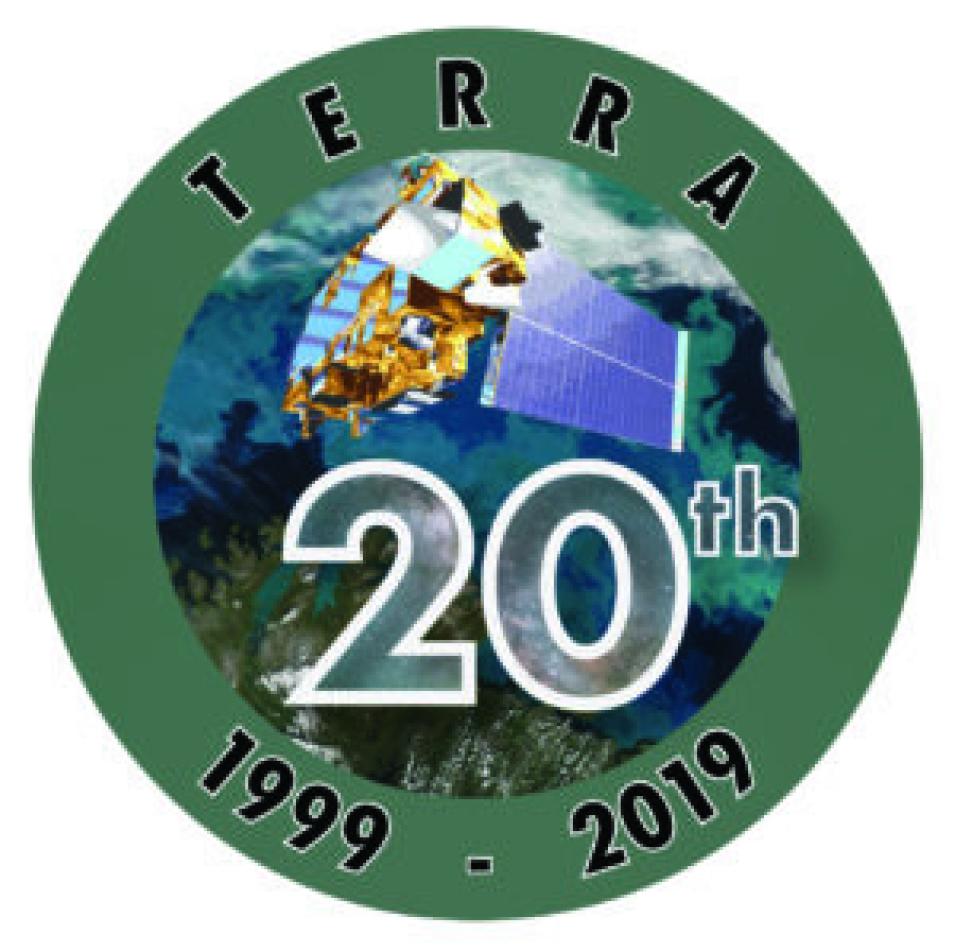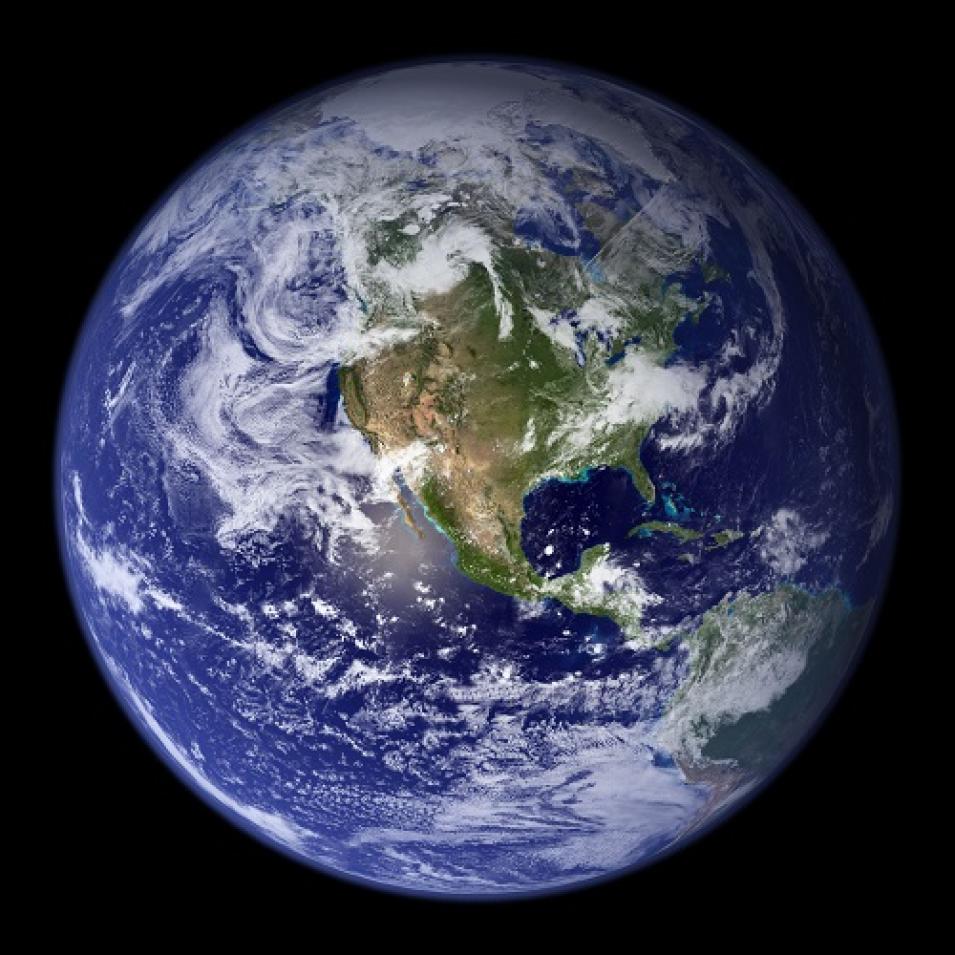There’s a Terra team mentality where everyone realizes that if one of the sensors on Terra benefits, it benefits the entire mission. For example, we changed the way we do our lunar roll maneuvers for MODIS because the MISR team noted that they were losing a bit of data near the Poles that were important to their processing scheme. All it took was someone on the MISR team saying that this was happening and we immediately all worked as a group to find the most equitable solution that would benefit all teams. We found a solution so that neither MODIS nor MISR took a hit. Once we knew there was an issue, they spoke up, we heard it, and we fixed it.
Ultimately, I am the one who makes the final decision, but it is a group agreement that comes into play into how we accomplish these decisions. So far, we have not had an issue on Terra where any instrument group felt that something was done that was bad for their group.
Terra’s ASTER instrument is an international partnership with Japan, and MOPITT is a joint venture with Canada. What challenges does this present?
When you have teams comprising different countries, you have not only cultural differences, but also differences in how governments work. For example, fiscal year boundaries can get really tricky when your fiscal year ends on one month and another country’s fiscal year ends on a different month and this impacts funding allocations for instrument support. In the case of our Japanese colleagues on the ASTER science team, you have to make sure you have an interpreter who not only can translate English and Japanese, but who also understands the science and the instrument.
The time difference also is a barrier. No matter what we do, if it involves multiple instruments, someone is going to lose sleep. Just the time zone differences will cause someone to be up overnight.
Once Terra data are downloaded, we send ASTER data to Japan and MOPITT data to Canada. Our Japanese colleagues process the exact same processing stream that we do in the U.S., just with different processors and with slightly different code. We make sure everything is the same. They distribute on their side and we distribute on our side, so there is a complete copy in Japan. For MOPITT it’s a little different. We process all of the MOPITT data at NCAR [the National Center for Atmospheric Research in Boulder, CO] and archive the data at NASA’s Langley Research Center, so it’s pretty straightforward.
Any disagreements we have are between scientists and engineers, not between Japanese or Canadian or American scientists and engineers. Scientists and engineers will always be scientists and engineers, regardless of country.
How much longer do you anticipate being able to get science quality data from Terra? What are your science and instrument teams doing to prolong the acquisition of science data?
We’re still on primary hardware and all indications are that the Terra platform and sensors can continue to operate and provide the high-quality data the science community has come to expect for the foreseeable future.
Other factors are more programmatic, such as funding and being a good neighbor to other satellites. Terra’s orbit will start to change after we do our last orbit maintenance burn in the spring [of 2020]. We’ll still have fuel to maintain altitude and for collision avoidance, but Terra’s crossing time will start to drift to earlier in the morning. The operations group has done a great job of keeping a constant crossing time for the past 18 years to a very narrow +/- two minutes, which is phenomenal. That has helped the data look more similar from day-to-day and from year-to-year. The operations group that is responsible for this is incredible and the effort they use to optimize fuel and maintain this has been just unbelievable.
Still, our fuel for that type of maintenance has run out, and we are keeping a reserve that allows us to do collision avoidance and eventually to lower our orbit when directed by NASA Headquarters so that we stay out of the way of other satellites. My hope is that we can continue operating Terra until our hardware limits what we can do, and the job of the Terra team is to make sure that the science justifies doing that.
Speaking of fuel, Terra launched with approximately 87.5 gallons of hydrazine fuel, and currently has about nine gallons of fuel remaining. What strategies do you and your team employ to maximize this dwindling resource?
The main issue [for maintaining the Terra spacecraft in orbit] is fuel, and we need fuel to do two things. We need to have the fuel reserve required to safely bring the spacecraft lower into the atmosphere and then de-orbit. The second item we need fuel for is maneuvers. There are two maneuvers we do. The first is debris avoidance and risk-mitigation maneuvers, both of which take very little fuel. The other is maneuvers to maintain our equator crossing time.
When our fuel started to run low, the question was, OK, what are we going to do? We realized that we don’t have to lower Terra’s orbit as much as we thought in order to keep other satellites safe; we just have to come down only a few kilometers, which means we now have extra fuel to hold our orbit longer than anticipated. NASA Headquarters decided that as long as we could lower safely then we could use the rest of the fuel for maneuvers to hold our crossing time. This gave us an extra three years at the current crossing time.
We’ll break our equator +/- two-minute crossing-time window in the fall of 2020. Then we’ll slowly start drifting in time and eventually get to a point where our crossing time occurs early enough that [NASA Headquarters] will ask us to lower our orbit. We can keep collecting data as the orbit lowers and the data will still be usable—we can make time corrections for a lot of the data we collect and we can update the algorithms, among other things. We can also learn new things by having an earlier crossing time and there are advantages to the science team to being able to do this.
The biggest problem when you start going to an earlier crossing time is that the Sun angle is lower and lower in the sky. Measurements that rely on sunlight start to struggle, and for instruments that rely on sunlight this is a problem. But because much or our data are collected in spectral bands where the human eye doesn’t operate or need reflected sunlight, like radiated energy, we can still collect data. We obviously collect a great deal of data in the dark with ASTER, MODIS, CERES, and MOPITT. There’s a lot of things that can still happen. We just need to make sure that we’re still doing good science.
What is the overall benefit to the science community to having remotely-sensed data from Earth observing satellites?
The big picture is the big advantage—you get data over larger spatial areas over very short periods of time. ASTER has a 60 km swath. To have an aircraft or a balloon do this would entail multiple flight lines, a lot of organization, and much more time. There are some advantages [to using an aircraft or balloon]: you can pick the time of day or a specific period within a growth cycle when there are no clouds, and you can get higher spatial resolution in some cases. But now you have to splice together maybe 100 lines of data where you flew out and flew back and flew out and flew back, and repeated this over and over. It might take two hours or more to do this. ASTER can acquire the same scene in a few seconds and cover everything you need in one 60-by-60-kilometer swath. Plus, you get another scene right after this and another over this same location 16 days later. You can even point ASTER to get to another location. With MODIS, we get the entire globe in one-to-two days; in some areas more than once a day.
This cannot be emphasized enough. There are areas you just can’t get to with ground or air measurements. This is the standard argument for all on-orbit assets that we have. The spatial coverage you can get, the temporal coverage you can get just can’t be matched with any other types of sensors.
Will there ever be another mission with the same impact as Terra?
I think it is good that we can say “no.” The next mission that is like Terra will have a different impact because it will have different instruments and a different objective and different scientists—hopefully a lot of young scientists that have a lot of new ideas about how to maximize the instruments and the data from the instruments.
It’s the younger scientists, the new scientists, that can come with all these great ideas about how we can do things better and more quickly. They can go straight to “I have good ideas and I want to implement them.” It’s a three-legged stool: you have the engineering, you have the data, and you have the scientists. None of them survive without the other.
Terra has had a fantastic impact on science. If we do our job right and make sure that the Terra data are archived properly and easily available and, more importantly, easily usable, then our impact will keep changing as new generations of scientists use these data and combine these data with other missions. This will ensure that we continue to get a new impact from these Terra data and that future missions will have an impact of their own.
Read More:
Twenty Years of Terra in Our Lives
Terra: The Hardest Working Satellite in Earth Orbit
Terra: Five Instruments—One Monumental Data Record


